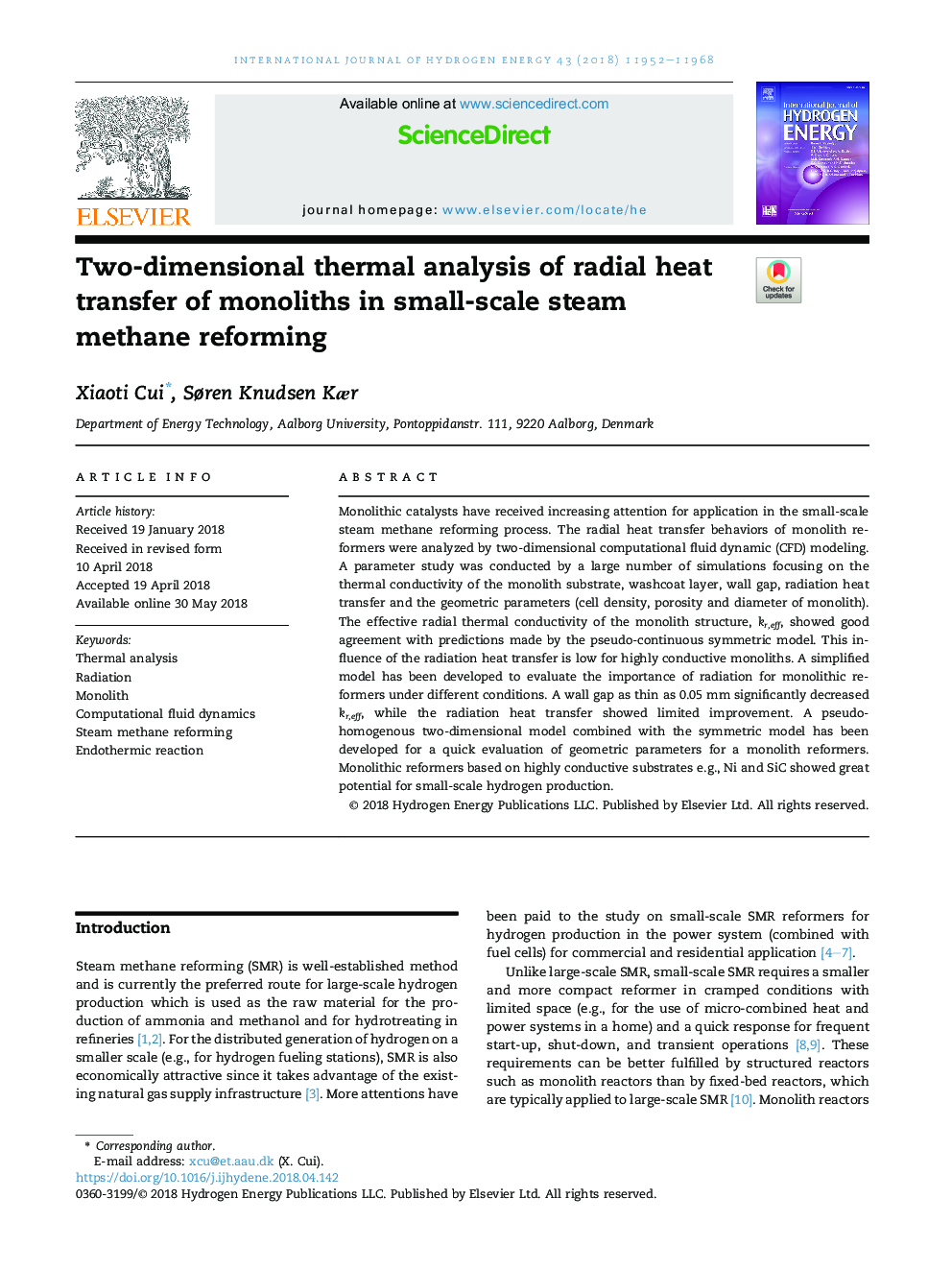| Article ID | Journal | Published Year | Pages | File Type |
|---|---|---|---|---|
| 7705503 | International Journal of Hydrogen Energy | 2018 | 17 Pages |
Abstract
Monolithic catalysts have received increasing attention for application in the small-scale steam methane reforming process. The radial heat transfer behaviors of monolith reformers were analyzed by two-dimensional computational fluid dynamic (CFD) modeling. A parameter study was conducted by a large number of simulations focusing on the thermal conductivity of the monolith substrate, washcoat layer, wall gap, radiation heat transfer and the geometric parameters (cell density, porosity and diameter of monolith). The effective radial thermal conductivity of the monolith structure, kr,eff, showed good agreement with predictions made by the pseudo-continuous symmetric model. This influence of the radiation heat transfer is low for highly conductive monoliths. A simplified model has been developed to evaluate the importance of radiation for monolithic reformers under different conditions. A wall gap as thin as 0.05Â mm significantly decreased kr,eff, while the radiation heat transfer showed limited improvement. A pseudo-homogenous two-dimensional model combined with the symmetric model has been developed for a quick evaluation of geometric parameters for a monolith reformers. Monolithic reformers based on highly conductive substrates e.g., Ni and SiC showed great potential for small-scale hydrogen production.
Keywords
Related Topics
Physical Sciences and Engineering
Chemistry
Electrochemistry
Authors
Xiaoti Cui, Søren Knudsen Kær,
